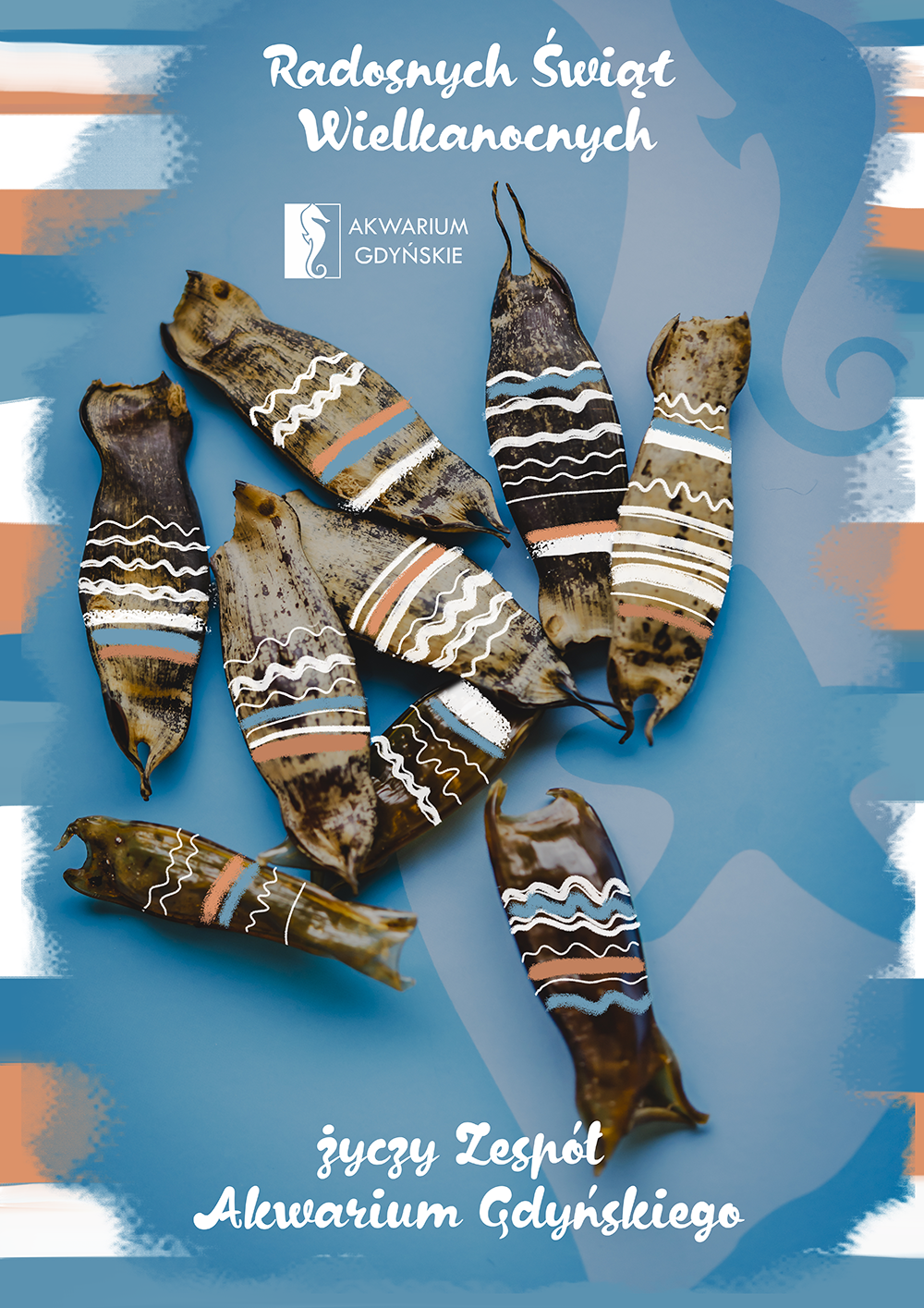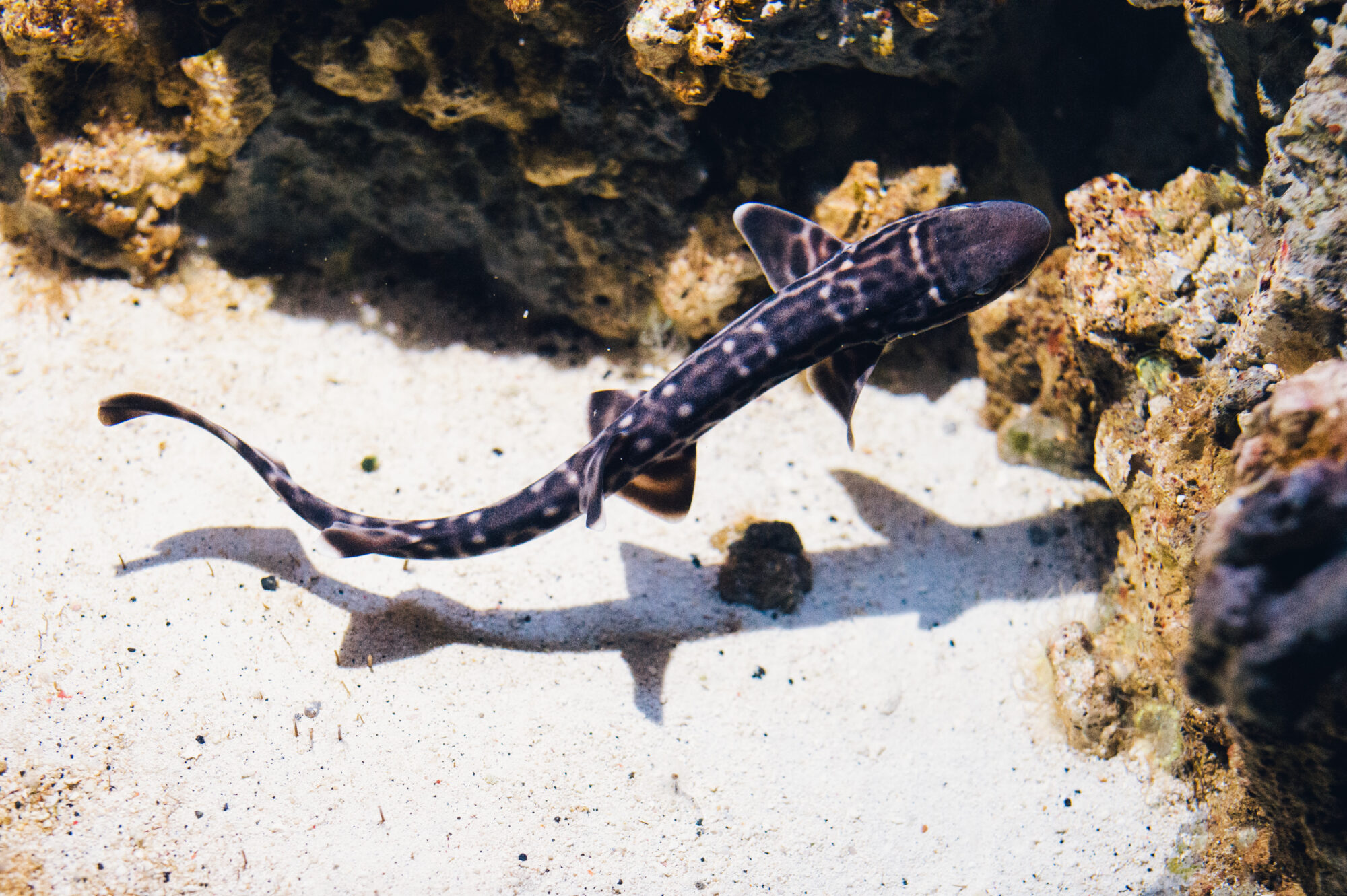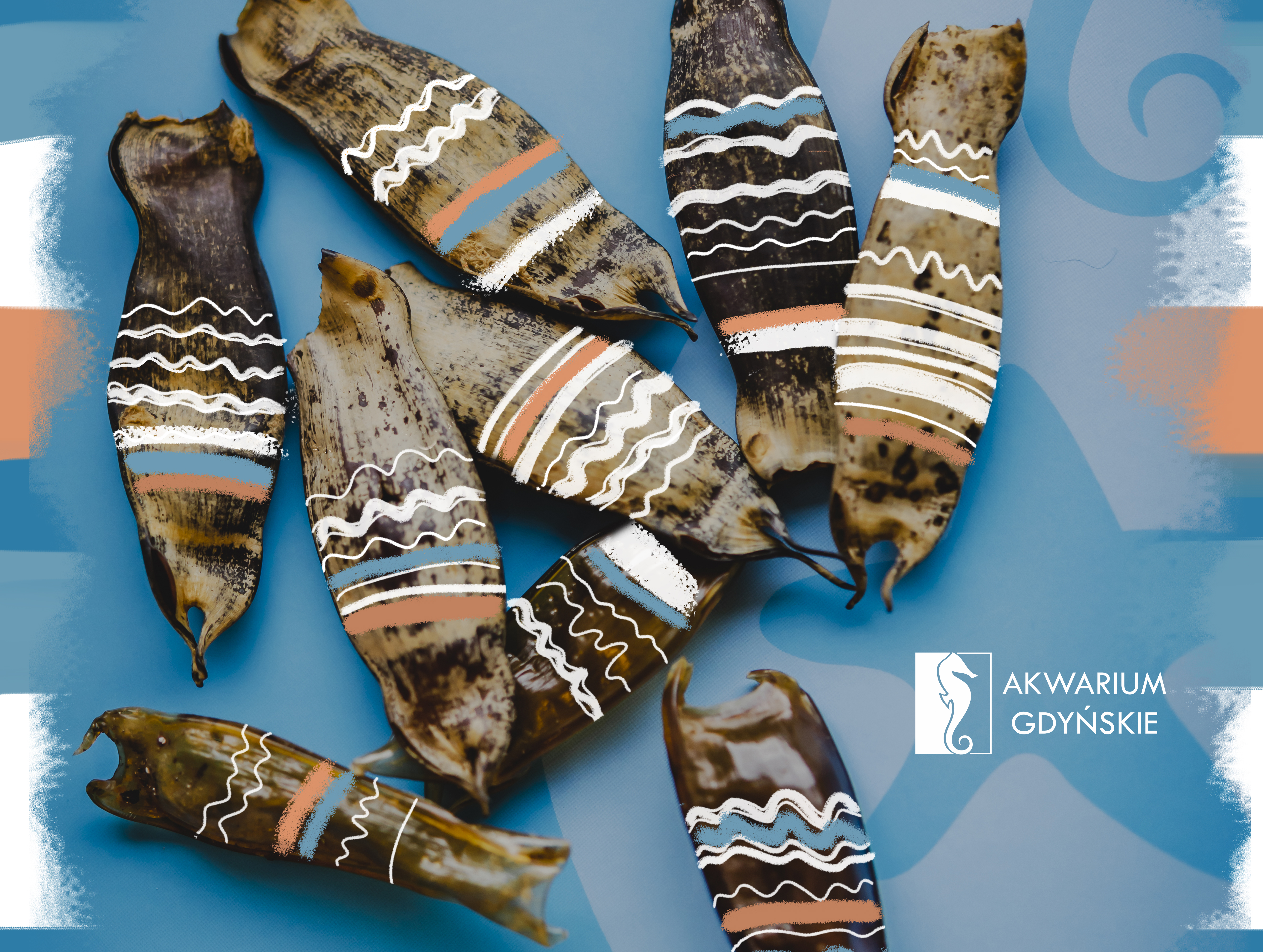On the occasion of the upcoming Easter holiday, we wish you joy, good health, and time to spend with your loved ones.

If you would like to spend it by visiting the Gdynia Aquarium, we would like to remind you that the exhibition will be closed on Easter Sunday. On other days, including Easter Monday, we invite you to visit us from 9 am to 7 pm. If you would like to visit us in April, please note that the Aquarium is closed on April 24th.
Why are those Easter eggs on the paper so strange?
This is our variation on ‘Easter eggs’ – a picture of eggs from our marble sharks in the form of Easter eggs 😉
For those interested – here’s a little piece of what it’s like to be an aquarist – Easter version – eggs.
We collect newly laid eggs of the marble sharks and transfer them to breeding tanks where conditions are suitable for their incubation.
There are special racks in the breeding tanks, where we attach the eggs using their tendrils.
It’s important that water flows through the eggs, to wash and oxygenate them at the same time.
After about 50 days, a delicate ‘unsealing’ of the egg occurs. At that point, the embryo is no longer tightly enclosed in its shell. This allows it to live and function in the surrounding water.
Incubation takes about 90-100 days. In the final period, the young shark no longer fits inside its capsule. It wriggles and nibbles at the capsule. If it can’t get out of the egg, it could lead to its death! Therefore, careful observation is important at this stage.
Often, the young hatch still with remnants of the yolk sac attached to their bellies, which will be absorbed within a few days.

During hatching, young marbled catsharks are about 10 cm long.
Newly “born” individuals are transferred to another tank. Each litter has its own tank, which helps to avoid situations in which older and stronger individuals would steal food from younger and weaker ones.
Feeding trials start with giving them plankton: first live, then frozen. The next step is trying to feed them mussels, shrimps, and chopped fish.
The young have specially prepared hiding places in their tanks. As a secretive species, they need such places.

